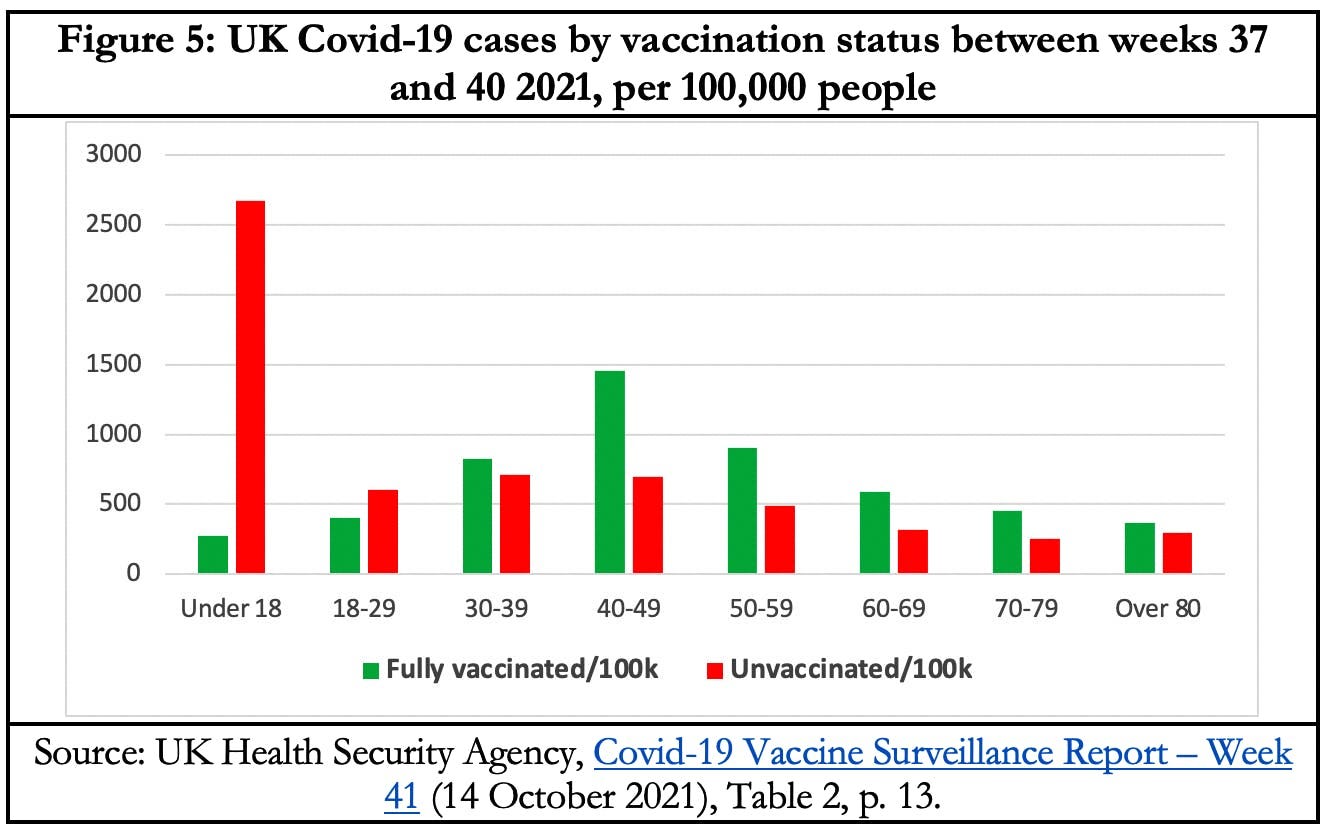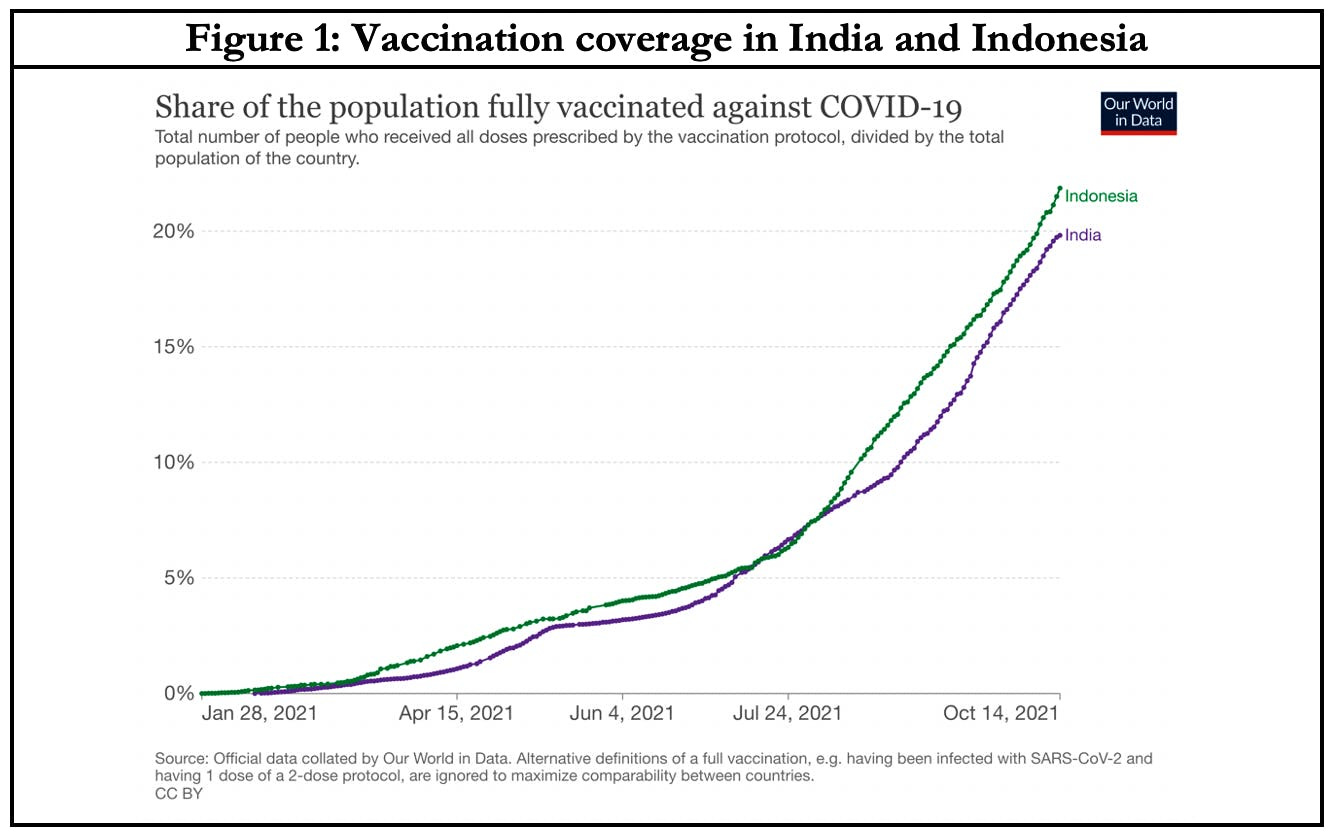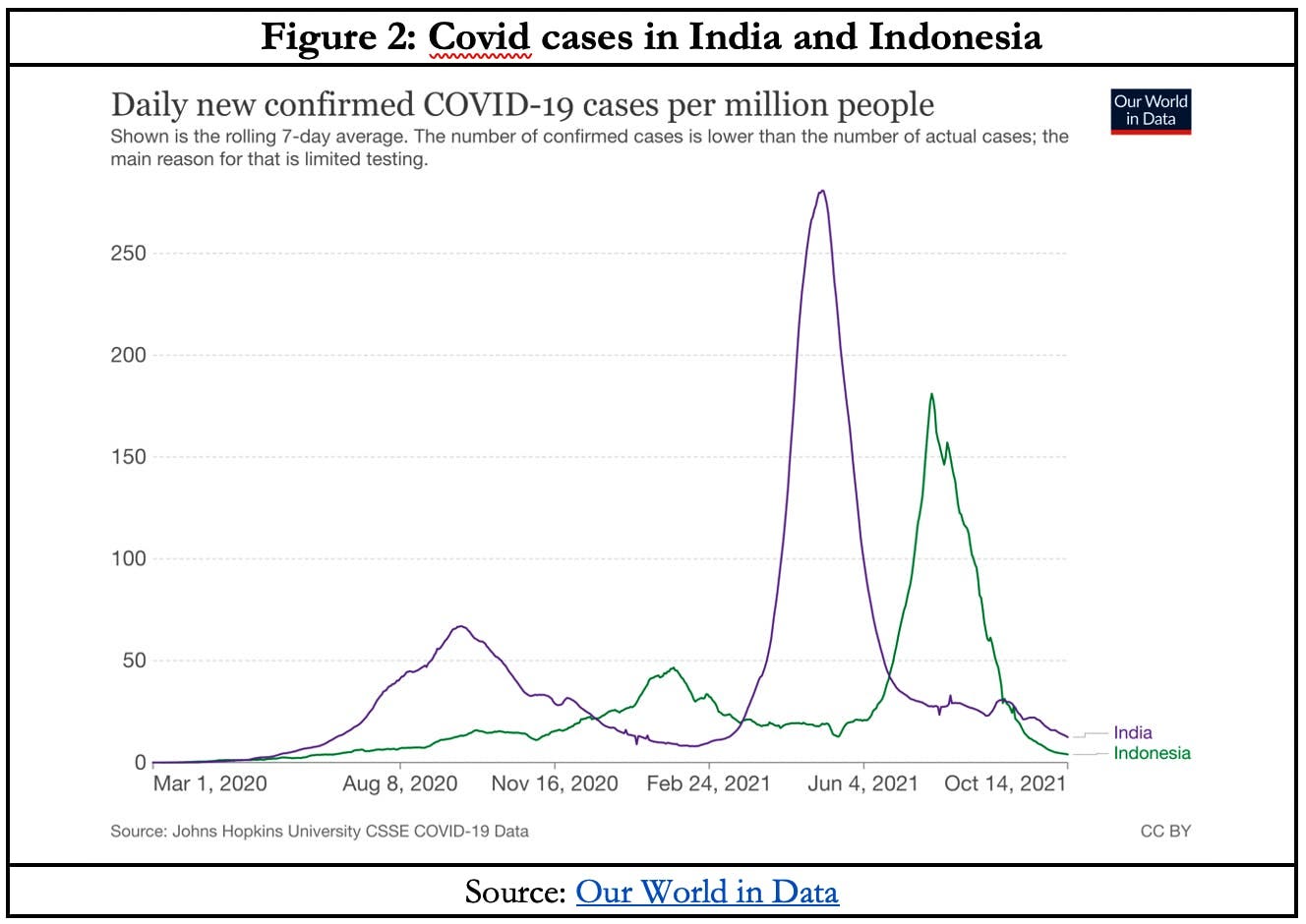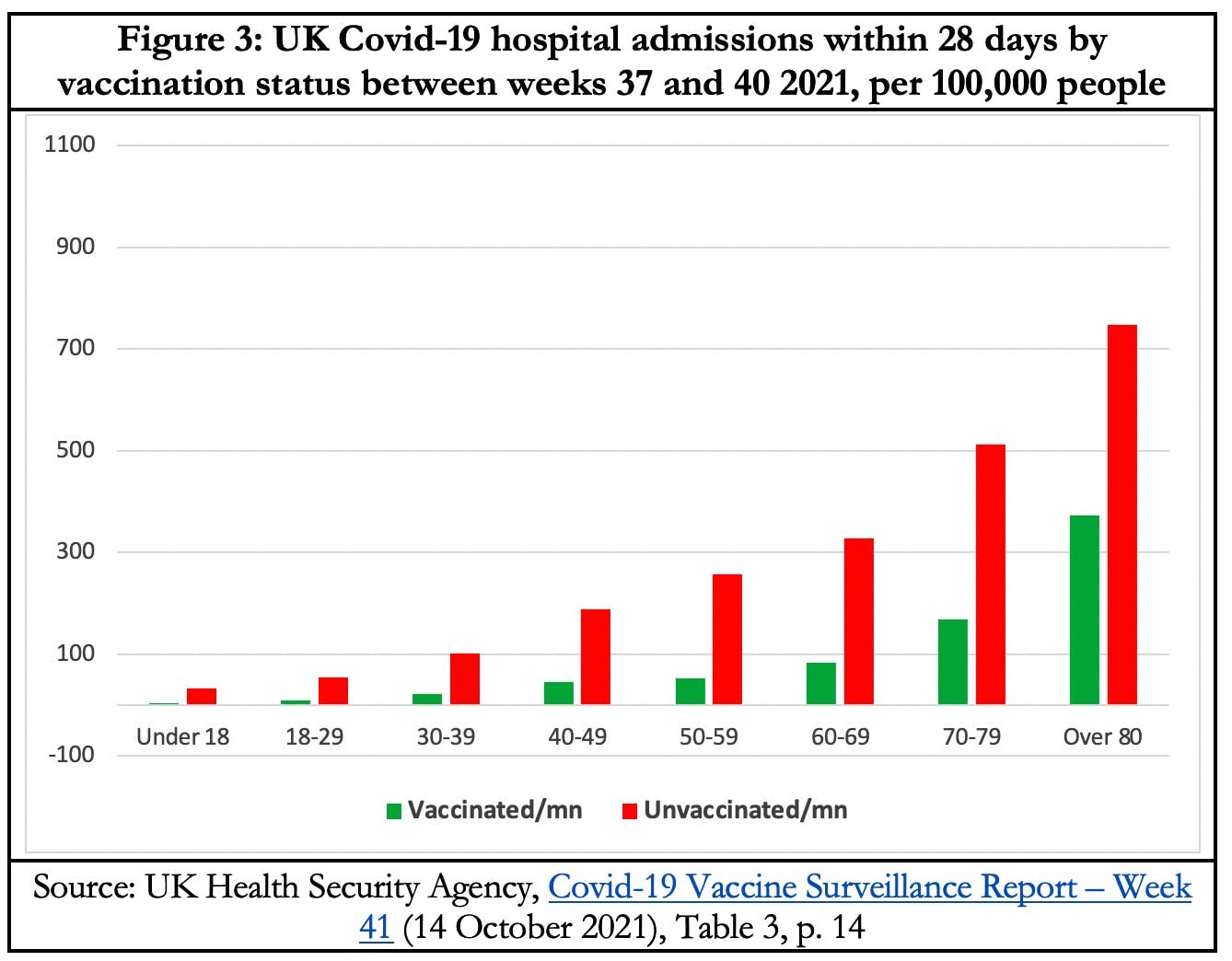Are You Sure About That Vaccine?
By ANU Professor Ramesh Thakur with Spectator Australia
Figures don’t lie, my critics insist. Very well, let’s look at some figures. I make three arguments here. First, vaccines are not necessary to tame even the highly infections Delta variant of the coronavirus. Figures 1 and 2 plot the vaccination coverage and cases and mortality in India (where the Delta variant originated) and Indonesia. Several things become immediately apparent.
To begin with, the virus infection and mortality curves in both countries follow the familiar bell shape and time duration of 6-10 weeks of growth and a similar period of retreat of the virus that we find just about everywhere.
Policy interventions – hard and light lockdowns, timing of lockdowns, mask mandates – make very little difference to the curves going up or coming down. Vaccination coverage in both countries is still very low, around 20%.
The infection and mortality curves in India peaked and bent downwards at the extremely low full vaccination rate of 2.4% in early May and at 5.7% in Indonesia in mid-July. By the time the cases had come right down (mid-July in India, mid-September in Indonesia), their respective full vaccinations were only 5.7% and 15.5%. So why has the rest of the world shown such little curiosity in finding out what lies behind the non-vaccine driven success of these two populous Asian countries?
The question is especially pertinent for Australia as India and Indonesia are within our strategic Indo-Pacific frame of reference. Could the explanation possibly include – whisper it softly – the drug that US authorities have mocked as fit only for equine treatment, that begins with ‘I’? Say it ain’t so, St Fauci.
Figure 1: Vaccination coverage in India and Indonesia
Figure 2: Covid cases in India and Indonesia
Figure 3: UK Covid-19 hospital admissions within 28 days by vaccination status between weeks 37 and 40 2021, per 100,000 people
Second, vaccines are not sufficient. They have proven to be leaky, so much so that, ignoring the moral hazard of further enriching manufacturers for the failures of their claim on efficacy, countries are now into booster jabs and those with two doses in Israel are officially classified a ‘unvaccinated’.
Vaccines remain an important tool for significantly reducing hospitalisations (Figure 3) and deaths (Figure 4), although the net benefit for under-40s looks negligible.
Figure 4: UK Covid-19 deaths per million people within 28 days of positive test, by vaccination status, between weeks 37 and 40 2021.
Figure 5: UK Covid-19 cases by vaccination status between weeks 37 and 40 2021, per 100,000 people

Third, when it comes to infections, a peculiar anomaly shows up (Figure 5). Vaccines reduce the incidence of infections up to age 29, but thereafter, for every age cohort, they actually increase infections.
This is particularly striking for 40-79 year olds, increasing by between 78% (70-79 years) and 109% (40-49 years). For forty year olds, vaccines more than double the infection rate.
Now, either vaccines are dangerous for reducing the pre-existing immunity against infection for adults over 30; or else the testing is, pardon the expression, total crap.
Considering the impact of vaccines on severely cutting down hospitalisations and deaths, almost certainly the testing is flawed, and then some.
The sooner mass testing is abandoned entirely, the better.
It should be restricted for those showing symptoms. The Vaccine Surveillance Report concludes that ‘vaccine effectiveness against symptomatic disease with the Delta variant’ ranges from 65-90% for the different vaccines and age groups (p. 4). This seems consistent with the hospitalisation and mortality figures.
If you don’t feel sick, you are not sick.
Otherwise, testing is a waste of scarce and costly resources (money, equipment, personnel), and it causes needless stress, anxiety and lost productivity as people are forced to isolate for no good reason or purpose.
A new study published in the Lancet on 8 October documents a world-wide increase of more than 129 million cases of major depression (53.2mn) and anxiety (76.2mn) disorders during the pandemic. The authors attribute this to the combined effects of the pandemic and lockdown measures.
Our Chief Health Officers have all callously disregarded this huge toll on mental health. Most masks and mass testing help to maintain the state of fear but are not obviously a good public health tool.
This piece originally appeared in Spectator Australia and is republished here with the author's kind permission.
RELATED STORIES:
https://www.spectator.com.au/2021/07/the-fading-case-for-vaccine-passports/
https://www.spectator.com.au/2021/10/the-empty-moral-posturing-of-attacks-on-vaccine-hesitants/
https://asenseofplacemagazine.com/ramesh-thakur-and-the-spectator/
https://asenseofplacemagazine.com/coronavirus-has-become-endemic-making-australias-policy-settings-obsolete/








